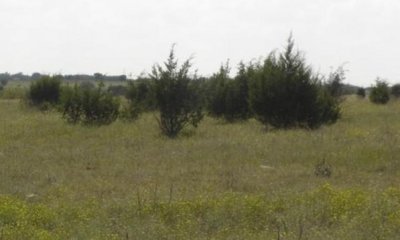
Southern Chalky Ridge
Scenario model
Current ecosystem state
Select a state
Management practices/drivers
Select a transition or restoration pathway
-
Transition T1A
No fire, no brush control, improper grazing management, long-term drought or growing-season stress
More details -
Restoration pathway R2A
Fire, brush management, proper grazing
More details -
No transition or restoration pathway between the selected states has been described
Target ecosystem state
Select a state
Description
Two communities exist in the Tallgrass/Midgrass State: the 1.1 Tallgrass Prairie Community and the 1.2 Midgrass Plant Community. Community 1.1 is characterized by tallgrasses dominating the understory annual production and woody species cover less than 15 percent of the area. Community 1.2 is characterized by midgrass dominance, but the woody species cover is 15 to 25 percent, with some species attaining heights of three feet.
Submodel
Description
Two communities exist in the Shrubland State: the 2.1 Midgrass/Shrub Community and the 2.2 Shortgrass/Midgrass/Shrub Community. Community 2.1 is characterized by midgrasses dominating the understory annual production and woody species between 25 and 40 percent. Community 2.2 is characterized by shortgrass dominance, but the woody species cover is greater than 40 percent.
Submodel
Mechanism
While the Tallgrass/Midgrass Prairie State has some resistance to shrub dominance, long-term lack of fire or brush management may allow brush to dominate the site even under proper grazing management. Shrubs make up a portion of the plant community in this state, therefore propagules are present. The mean fire return interval to maintain the Tallgrass/Midgrass Prairie State is 5 to 10 years. Even with proper grazing management and favorable climate conditions, lack of fire for 15 to 25 years will allow woody species to increase in canopy to reach the 25 percent threshold level. An infusion of invasive woody species (i.e. juniper or mesquite) will speed up the process. Improper grazing management, prolonged drought, and a warming climate will provide a competitive advantage to shrubs which will accelerate this process. Tallgrasses will decrease to less than 10 percent species composition.
The driver for Transition T1A is lack of fire and/or brush control. The Tallgrass/Midgrass Prairie State is always at risk for the transition to the Shrubland State because woody species are present in the prairie plant community. Introduction of aggressive woody invader species (i.e. juniper) increase the risk that this state transition will occur and accelerate the rate at which it is likely to occur.
Mechanism
Restoration of the Shrubland State to the Tallgrass/Midgrass Prairie State requires substantial energy input. Mechanical or herbicidal brush control treatments can be used to remove woody species. A long-term prescribed fire program may sufficiently reduce brush density to a level below the threshold of the Tallgrass/Midgrass Prairie State, particularly if the woody component is dominated by species that are not re-sprouters. Brush management in combination with prescribed fire, proper grazing, and favorable growing conditions may be the most economical means of creating and maintaining the desired plant community. If remnant populations of tallgrasses, midgrasses, and desirable forbs are not present at sufficient levels, range seeding will be necessary. Remnant grasses may be protected between rocks. Once the overstory is removed, they express themselves. Range planting on this site is somewhat risky, and it is a challenge to establish a successful stand of seeded grass on a consistent basis. The driver for Restoration Pathway R2A is fire and/or brush management combined with restoration of the herbaceous community and proper grazing management. Restoration may require aggressive treatment of invader species.
Model keys
Briefcase
Add ecological sites and Major Land Resource Areas to your briefcase by clicking on the briefcase (![]() ) icon wherever it occurs. Drag and drop items to reorder. Cookies are used to store briefcase items between browsing sessions. Because of this, the number of items that can be added to your briefcase is limited, and briefcase items added on one device and browser cannot be accessed from another device or browser. Users who do not wish to place cookies on their devices should not use the briefcase tool. Briefcase cookies serve no other purpose than described here and are deleted whenever browsing history is cleared.
) icon wherever it occurs. Drag and drop items to reorder. Cookies are used to store briefcase items between browsing sessions. Because of this, the number of items that can be added to your briefcase is limited, and briefcase items added on one device and browser cannot be accessed from another device or browser. Users who do not wish to place cookies on their devices should not use the briefcase tool. Briefcase cookies serve no other purpose than described here and are deleted whenever browsing history is cleared.
Ecological sites
Major Land Resource Areas
The Ecosystem Dynamics Interpretive Tool is an information system framework developed by the USDA-ARS Jornada Experimental Range, USDA Natural Resources Conservation Service, and New Mexico State University.






